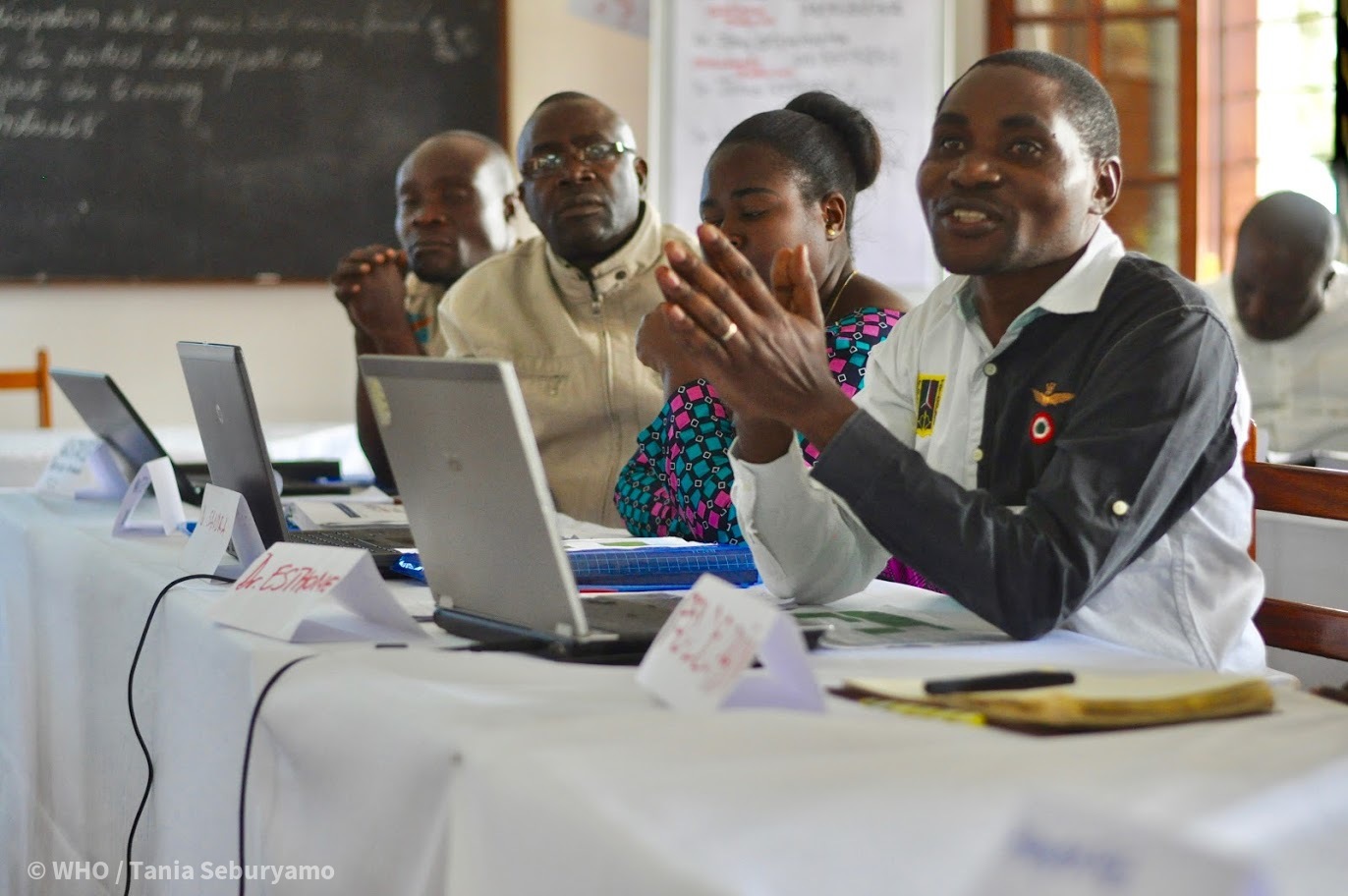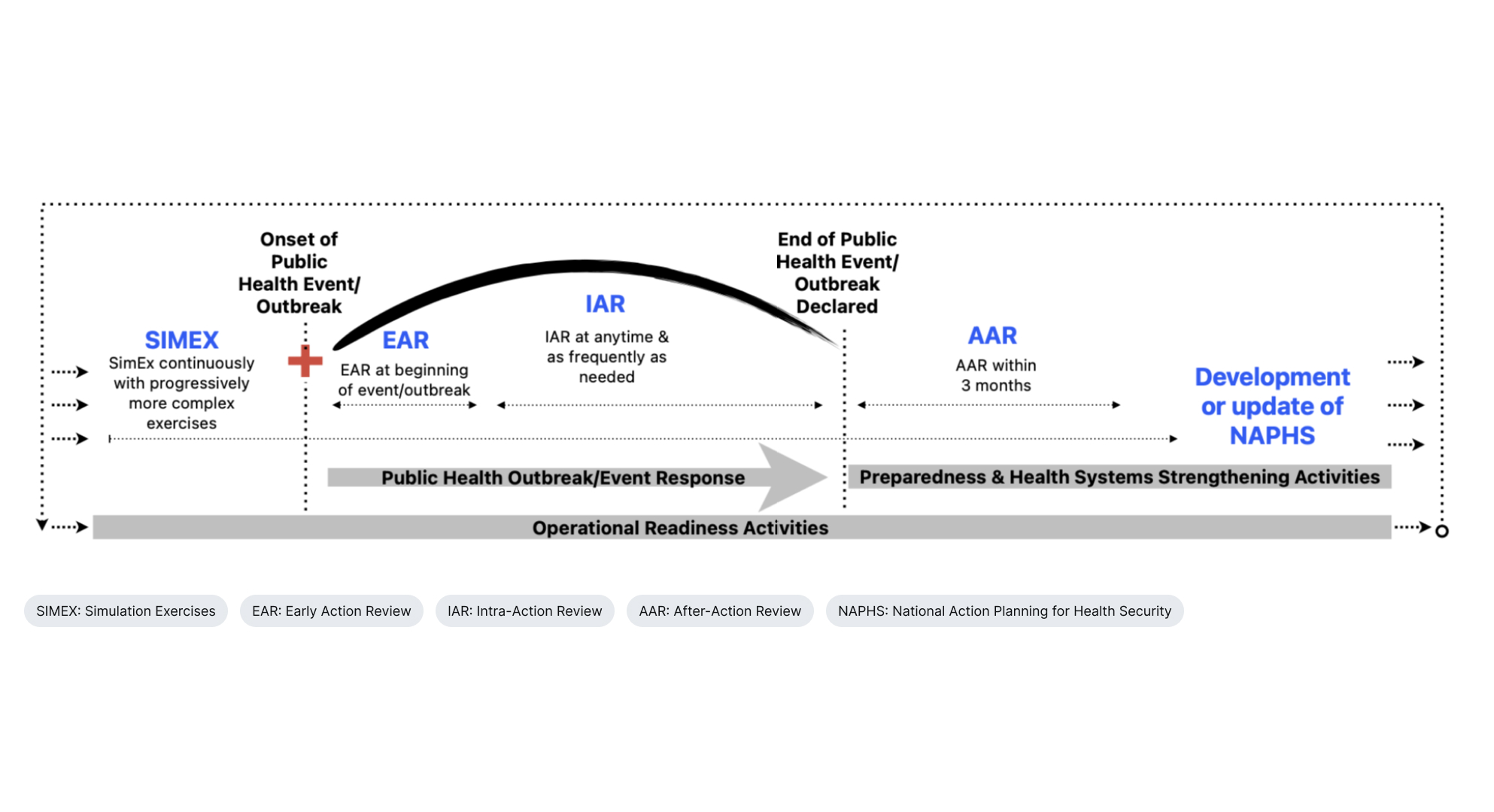AAR
After Action Review
An After Action Review is a qualitative review of actions that are taken to respond to an emergency or a public health event as a means of identifying best practices and areas for improvement to be better prepared for the future. It helps to assess the functionality of national capacities for preparedness and response to health emergencies.

